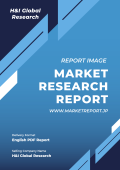| 【英語タイトル】Livestock and Meat Market - Growth, Trends, and Forecasts (2023 - 2028)
|
 | ・商品コード:MOR23MRC024
・発行会社(調査会社):Mordor Intelligence
・発行日:2023年1月23日
・ページ数:185
・レポート言語:英語
・レポート形式:PDF
・納品方法:Eメール(受注後2-3営業日)
・調査対象地域:アメリカ、カナダ、メキシコ、ドイツ、イギリス、フランス、スペイン、ロシア、イタリア、中国、インド、オーストラリア、日本、ブラジル、アルゼンチン、サウジアラビア、南アフリカ
・産業分野:農業
|
◆販売価格オプション
(消費税別)
※販売価格オプションの説明
※お支払金額:換算金額(日本円)+消費税
※納期:即日〜2営業日(3日以上かかる場合は別途表記又はご連絡)
※お支払方法:納品日+5日以内に請求書を発行・送付(請求書発行日より2ヶ月以内に銀行振込、振込先:三菱UFJ銀行/H&Iグローバルリサーチ株式会社、支払期限と方法は調整可能)
|
❖ レポートの概要 ❖
Mordor Intelligence社発行の当調査レポートによると、世界の家畜&肉市場規模は、予測期間中に年平均4.5%成長すると予測されています。当レポートは、家畜&肉の世界市場を調査対象とし、イントロダクション、調査手法、エグゼクティブサマリー、市場動向、家畜活動別(生体動物取引、食用肉、肉類副産物、畜産製品)分析、地域別(アメリカ、カナダ、メキシコ、ドイツ、イギリス、フランス、スペイン、ロシア、イタリア、中国、インド、オーストラリア、日本、ブラジル、アルゼンチン、サウジアラビア、南アフリカ)分析、市場機会・将来の動向など、多面的な分析結果をまとめたものです。
・イントロダクション
・調査手法
・エグゼクティブサマリー
・市場動向
・世界の家畜&肉市場規模:家畜活動別
- 生体動物取引の市場規模
- 食用肉の市場規模
- 肉類副産物の市場規模
- 畜産製品の市場規模
・世界の家畜&肉市場規模:地域別
- 北米の家畜&肉市場規模
アメリカの家畜&肉市場規模
カナダの家畜&肉市場規模
メキシコの家畜&肉市場規模
…
- ヨーロッパの家畜&肉市場規模
ドイツの家畜&肉市場規模
イギリスの家畜&肉市場規模
フランスの家畜&肉市場規模
…
- アジア太平洋の家畜&肉市場規模
中国の家畜&肉市場規模
インドの家畜&肉市場規模
オーストラリアの家畜&肉市場規模
…
- 南米の家畜&肉市場規模
ブラジルの家畜&肉市場規模
アルゼンチンの家畜&肉市場規模
…
- 中東の家畜&肉市場規模
サウジアラビアの家畜&肉市場規模
南アフリカの家畜&肉市場規模
…
- その他地域の家畜&肉市場規模
・市場機会・将来の動向 |
The livestock and meat market is projected to register a CAGR of 4.5% during the forecast period.
The limited availability of land and water resources for animal feed production and the increasing use of these resources for food are boosting the demand for animal feed in the overall meat industry. Countries such as India, China, Brazil, and Russia are among the world’s fastest-growing economies. A rise in per capita income is expected to shift dietary preferences toward protein-rich diets.
However, meat consumption patterns are expected to remain significantly different in various parts of the world because of cultural, religious, and other consumer preference factors in different countries.
Globally, increasing population trends also support the growth of the world’s meat and seafood market. The highest growth in meat consumption is expected from the Asia-Pacific and Latin American regions due to changing diet patterns, higher protein intake, urbanization, population, and economic growth. For instance, according to the OECD Agriculture Statistics 2022 Report, globally, protein availability from poultry, pork, beef, and sheep meat is projected to grow by 16%, 17%, 8%, and 16%, respectively, by 2031.
Livestock & Meat Market Trends
Increasing Demand for Animal Proteins
According to the WHO, annual meat production is projected to increase from 218.0 million metric ton in 1997-1999 to 376.0 million metric ton by 2030 due to the growing demand for protein-rich food, primarily driven by the rising health consciousness among consumers globally. The increasing demand for animal protein, along with the growing consumer preference for low-fat and high-protein diets, has led to a remarkable rise in the consumption of animal protein across the world.
This trend has been driven by the influence of western cuisines across Africa, Asia-Pacific, and especially the Middle East. As per the OECD-FAO Agricultural Outlook 2022 Report, the consumption of poultry meat is projected to increase globally to 154 million metric ton over the forecast period, accounting for nearly half of the additional meat consumed. On a per capita basis, these robust growth rates in poultry consumption reflect the significant role it plays in the national diets of several populous developing countries, including China, India, Indonesia, Malaysia, Pakistan, Peru, and others.
Asia-Pacific is the Fastest Growing in the Market
The growing meat production in the developing nations of Asia-Pacific is leading to high growth in the overall livestock and meat industry. China is the world’s largest meat producer, followed by the United States, the European Union, Brazil, and Russia. Globally, livestock expansion is likely to be facilitated by the increasing size and consolidation of production units toward more integrated systems, especially in emerging developing countries.
This trend is due to changes in the dietary patterns of Chinese consumers due to busy lifestyles and rising disposable incomes. The consumption of processed meat has been steadily increasing, in line with income growth, thus driving the meat market in the country.
Poultry meat may continue to be the primary driver of meat production, registering a 16% by 2031. With favorable meat-to-feed price ratios compared to other ruminants and a short production cycle, poultry producers can respond quickly to market signals while taking on board rapid improvements in genetics, animal health, and feeding practices. Production may expand from sustained productivity gains in China, India, and Indonesia.
China’s demand for food and meat continues to rise in terms of quantity and quality. With local meat supplies limited by land, feed, water, and supply chain issues, China has to import a significant proportion of the meat from Australia, Brazil, Uruguay, and Argentina. With increasing modernization and urbanization across China, demand for western-influenced low-temperature meat products, such as bacon and ham products, is driving the meat market.
The growing sheep meat production will likely originate in Asia, led by China, India, and Pakistan. However, significant increases are also projected in Africa, particularly in the least developed countries of Sub-Saharan Africa. Despite limitations linked to urbanisation, desertification, and the availability of feed in some countries, sheep and goats are well adapted to the region with their extensive production systems.
Additional Benefits:
- The market estimate (ME) sheet in Excel format
- 3 months of analyst support
1 INTRODUCTION
1.1 Study Assumptions and Market Definition
1.2 Scope of the Study
2 RESEARCH METHODOLOGY
3 EXECUTIVE SUMMARY
4 MARKET DYNAMICS
4.1 Market Overview
4.2 Market Drivers
4.3 Market Restraints
4.4 Value Chain of Livestock and Meat Industry
5 MARKET SEGMENTATION
5.1 Livestock Activity
5.1.1 Live Animals Trade
5.1.2 Edible Meat
5.1.2.1 Beef
5.1.2.2 Poultry
5.1.2.3 Pork
5.1.2.4 Mutton
5.1.2.5 Other Edible Meat
5.1.3 Meat Byproducts
5.1.3.1 Meat Offal
5.1.3.2 Fats
5.1.4 Livestock Products
5.1.4.1 Raw Milk
5.1.4.2 Eggs
5.1.4.3 Natural Honey
5.1.4.4 Beeswax
5.1.4.5 Wool
5.1.4.6 Raw Hides and Skin
5.2 Geography
5.2.1 North America
5.2.1.1 United States
5.2.1.2 Canada
5.2.1.3 Mexico
5.2.1.4 Rest of North America
5.2.2 Europe
5.2.2.1 Germany
5.2.2.2 United Kingdom
5.2.2.3 France
5.2.2.4 Spain
5.2.2.5 Russia
5.2.2.6 Italy
5.2.2.7 Rest of Europe
5.2.3 Asia-Pacific
5.2.3.1 China
5.2.3.2 India
5.2.3.3 Australia
5.2.3.4 Japan
5.2.3.5 Rest of Asia-Pacific
5.2.4 South America
5.2.4.1 Brazil
5.2.4.2 Argentina
5.2.4.3 Rest of South America
5.2.5 Middle-East
5.2.5.1 Saudi Arabia
5.2.5.2 South Africa
5.2.5.3 Rest of Middle-East
6 MARKET OPPORTUNITIES AND FUTURE TRENDS











